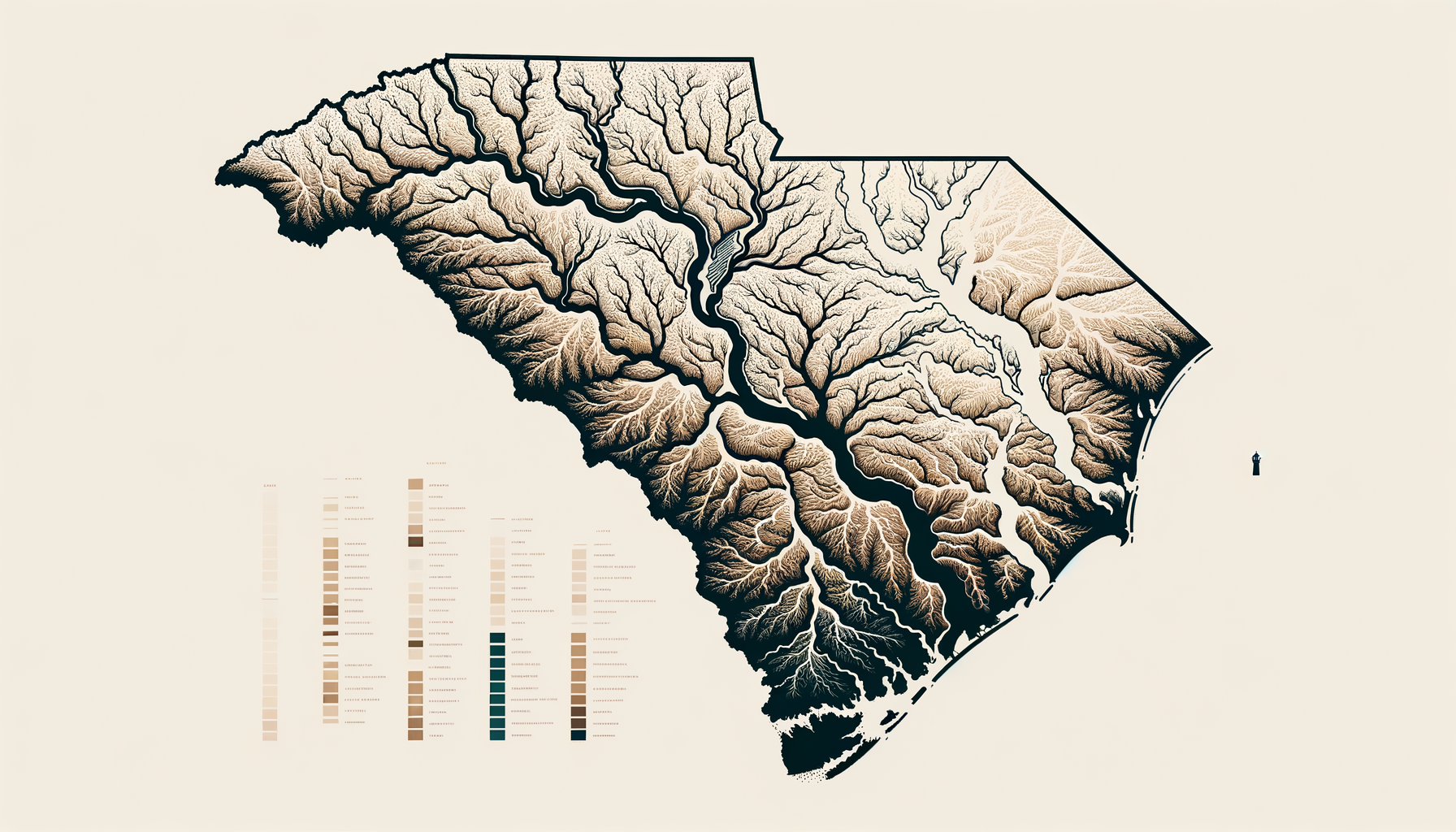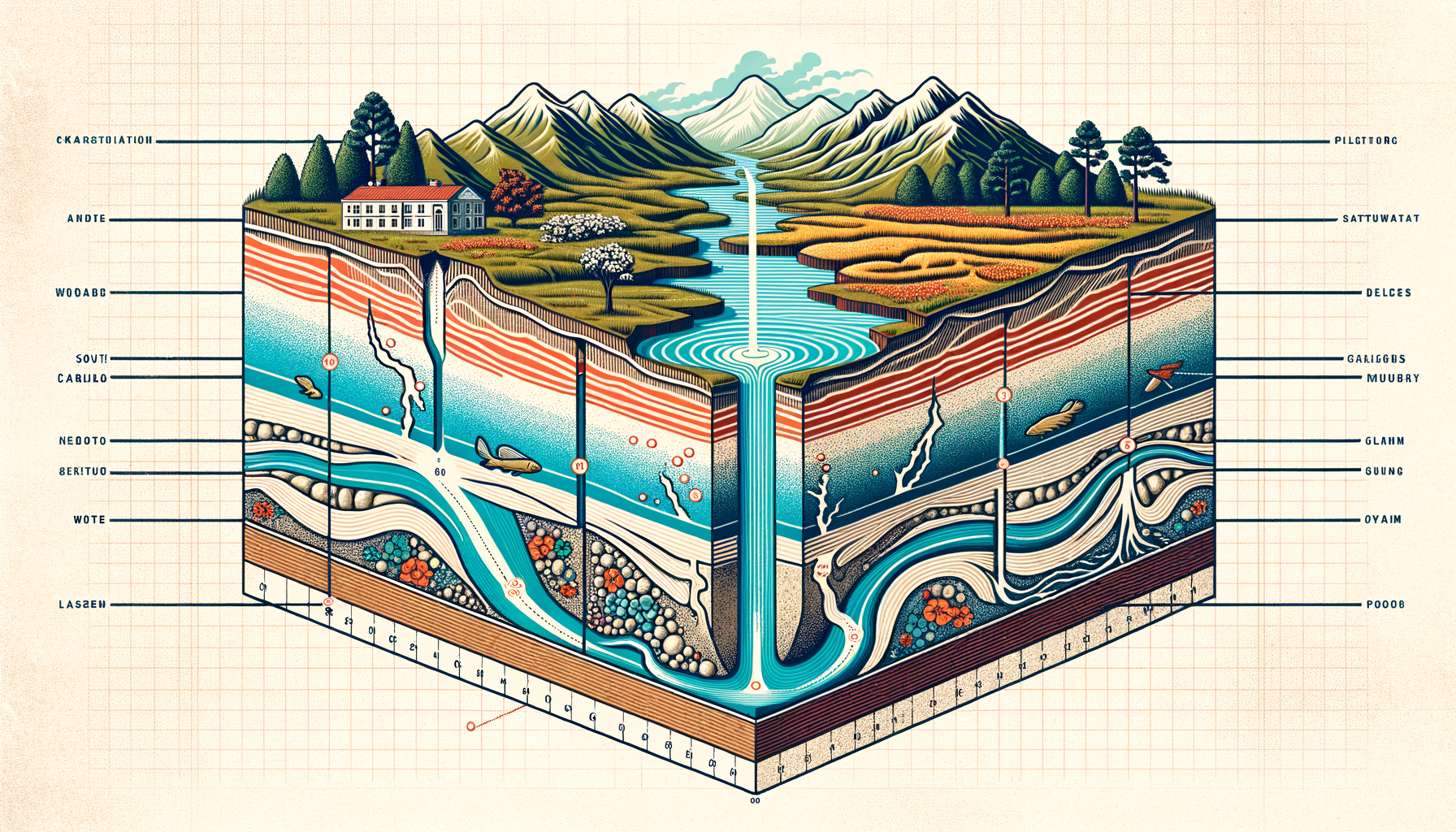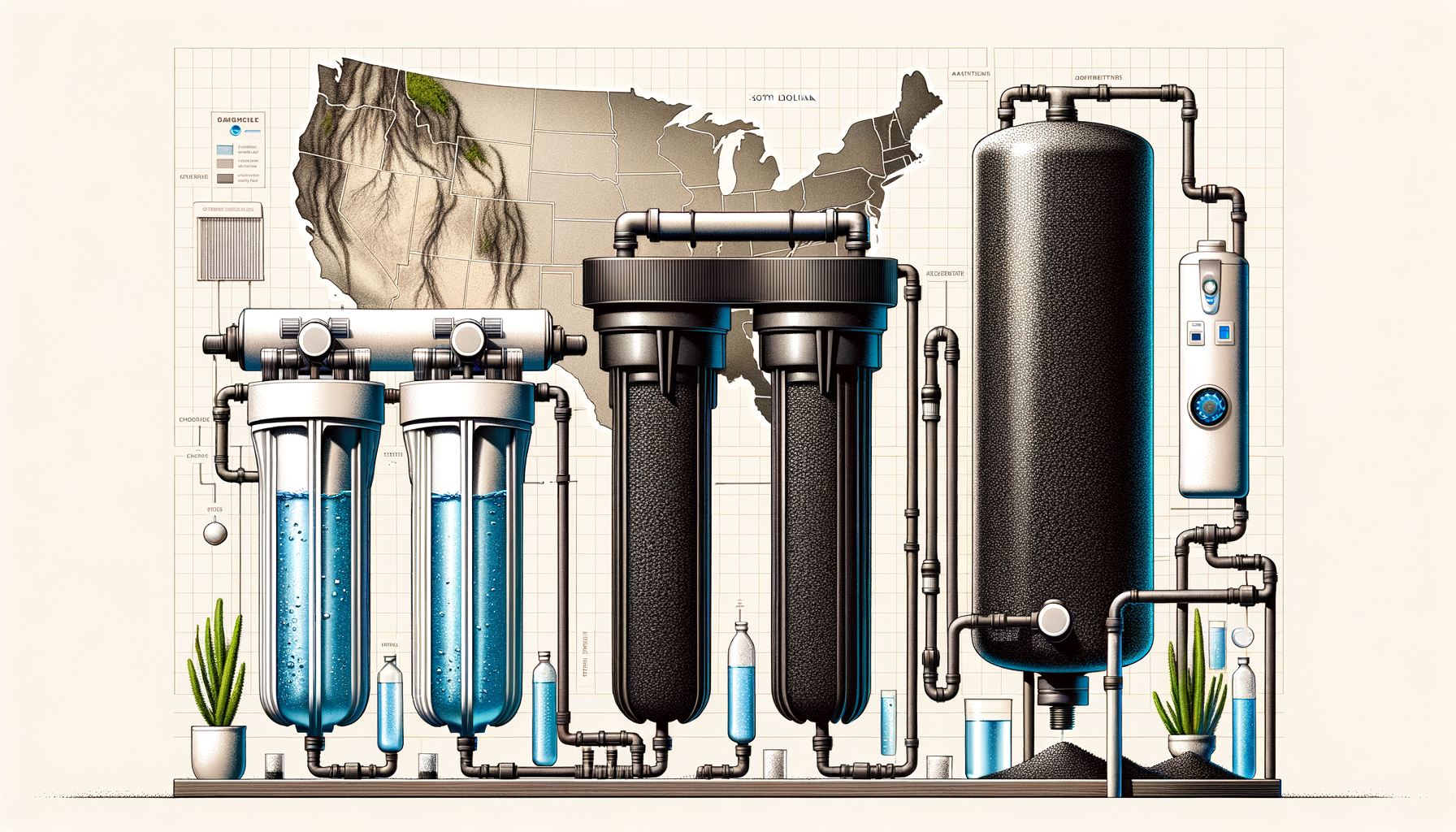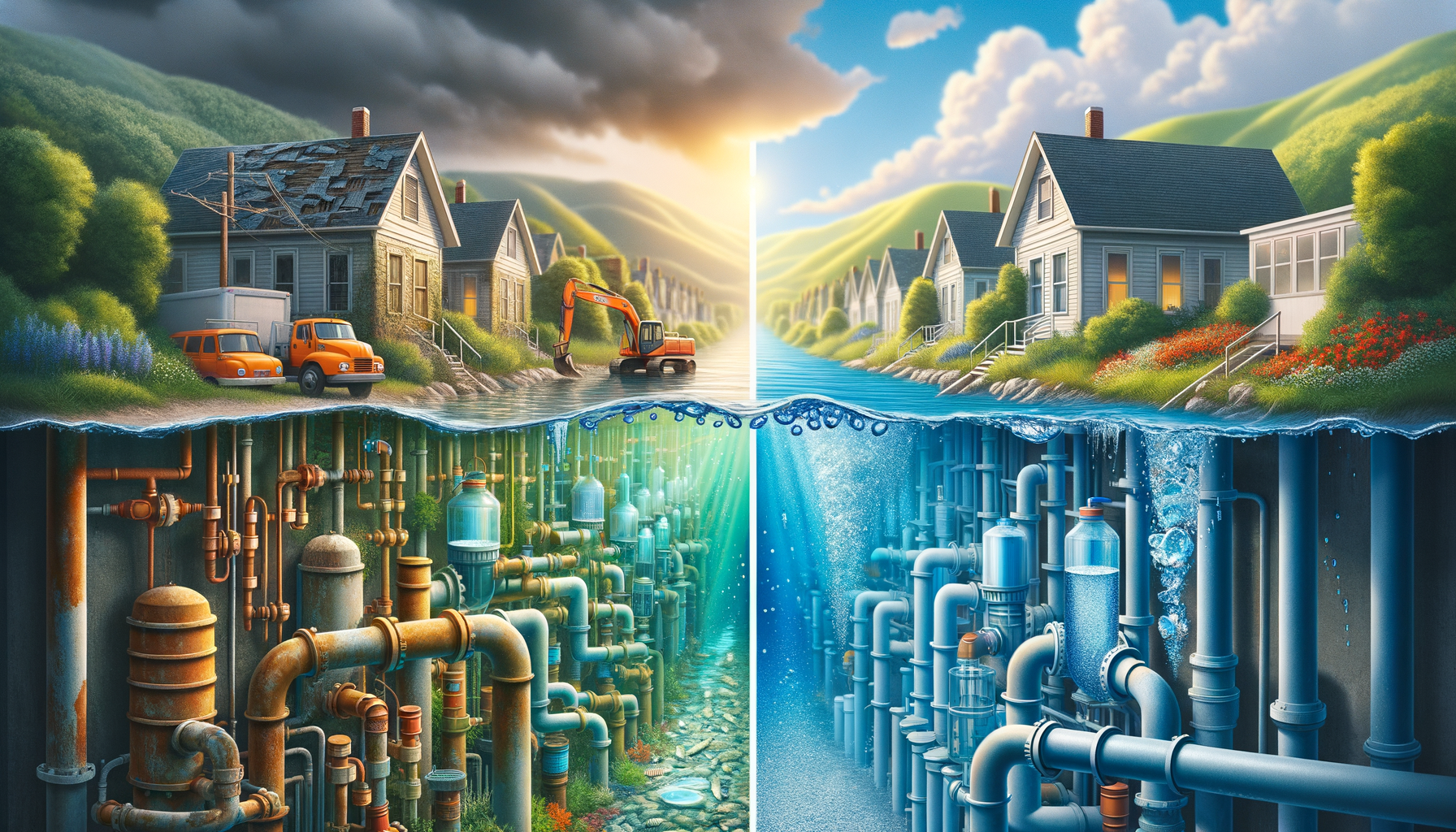Comprehensive Guide to Water Quality in South Carolina: Contaminants, Issues, and Water Filtration Solutions
by Ryan Moreau / updated March 1st, 2025
South Carolina, with its rich tapestry of waterways—from the serene Lowcountry rivers to the bustling coastal regions—relies heavily on its abundant water resources for drinking, agriculture, industry, and recreation. However, the state faces significant water quality challenges due to rapid urbanization, industrial activities, agricultural runoff, and natural geologic factors. In this comprehensive guide, we delve into the common contaminants found in South Carolina’s water, explore regional water quality issues, and offer effective filtration solutions. Begin by using our Water Quality Tool to receive a customized analysis of your local water conditions.

Overview of South Carolina’s Water Sources
South Carolina’s water supply is as diverse as its landscape, encompassing coastal areas, river systems, and groundwater aquifers. Key sources include:
- Coastal Plain Aquifers: These aquifers supply water to much of the state, particularly in the east, providing groundwater for municipal and private use.
- Piedmont Rivers and Lakes: Rivers like the Savannah, Congaree, and Pee Dee, along with man-made reservoirs such as Lake Murray and Lake Hartwell, are vital for drinking water, hydroelectric power, and recreation.
- Surface Water from Mountain Regions: The Blue Ridge Mountains contribute to the headwaters of several rivers, supplying high-quality water to communities in the upstate region.
- Atlantic Ocean and Estuaries: While not a source of drinking water, coastal waters impact groundwater salinity and are crucial for industries like fishing and tourism.
Ensuring the quality of South Carolina’s water across these varied sources necessitates diligent monitoring and advanced treatment solutions.
Common Water Quality Contaminants in South Carolina
Water sources in South Carolina may contain a range of contaminants due to agricultural practices, industrial discharges, natural geological formations, and aging infrastructure. To better understand what might affect your area, start with our Water Quality Tool and then review these common issues:
1. Arsenic
Arsenic is present in some South Carolina groundwater due to natural deposits and industrial activities. Prolonged exposure to arsenic can cause skin lesions, cardiovascular disease, and an increased risk of cancer.
Water Filtration Options for Arsenic: Reverse Osmosis Water Filters
2. Nitrates
Agricultural runoff in South Carolina’s rural areas can elevate nitrate levels in groundwater, posing risks especially to infants, such as methemoglobinemia or “blue baby syndrome.”
Water Filtration Options for Nitrates: Reverse Osmosis Water Filters
3. Lead and Copper
Aging infrastructure in some South Carolina cities can lead to lead and copper leaching into drinking water from corroded pipes, especially in older homes and buildings. These metals pose health risks particularly to children and pregnant women.
Water Filtration Options for Heavy Metals: Reverse Osmosis Water Filters, Activated Carbon Water Filters
4. Microbial Contaminants
Private wells in South Carolina are susceptible to microbial contamination from septic system failures and agricultural runoff, leading to the presence of bacteria such as E. coli and coliforms.
Water Filtration Options for Microbial Contaminants: Reverse Osmosis Water Filters with UV disinfection systems can effectively neutralize bacteria and viruses.
5. Pesticides and Herbicides
Intensive agricultural practices in South Carolina can introduce pesticides and herbicides into both surface and groundwater, potentially impacting human health and ecosystems.
Water Filtration Options for Pesticides and Herbicides: Reverse Osmosis Water Filters, Activated Carbon Water Filters
6. Volatile Organic Compounds (VOCs)
Industrial facilities and improper disposal of chemicals can lead to VOCs like benzene and trichloroethylene contaminating water sources in South Carolina. These compounds are linked to liver, kidney, and nervous system damage.
Water Filtration Options for VOCs: Activated Carbon Water Filters
7. PFAS (Per- and Polyfluoroalkyl Substances)
PFAS contamination has been detected in some areas of South Carolina, often linked to industrial sites and firefighting foam usage. Chronic exposure can affect thyroid function and immune response, and increase cancer risk. For more detailed information, visit the EPA PFAS Tools and our PFAS Contamination Guide.
Water Filtration Options for PFAS: Reverse Osmosis Water Filters, Activated Carbon Water Filters
8. Mercury
Mercury contamination in South Carolina’s waterways can result from industrial discharges and atmospheric deposition. Mercury accumulates in fish and poses health risks to humans consuming contaminated fish.
Water Filtration Options for Mercury: Reverse Osmosis Water Filters
9. Radionuclides (Uranium and Radium)
Certain regions in South Carolina have naturally occurring radionuclides in groundwater due to local geology. Long-term exposure to these substances can increase the risk of cancer.
Water Filtration Options for Radionuclides: Reverse Osmosis Water Filters

Regional Water Quality Challenges in South Carolina
South Carolina’s varied geography—from mountainous regions to coastal plains—presents unique regional water quality challenges. According to the EPA and the South Carolina Department of Health and Environmental Control (SCDHEC), significant issues include:
1. Coastal Regions: Saltwater Intrusion
Excessive groundwater withdrawal in coastal areas like Hilton Head and Charleston has led to saltwater intrusion into freshwater aquifers. This increases the salinity of drinking water, affecting taste and potentially corroding plumbing systems.
2. Industrial Pollution in Upstate
Industrial activities in the upstate regions, particularly around Greenville and Spartanburg, have contributed to the contamination of water sources with heavy metals and VOCs. Ongoing monitoring and remediation efforts are essential to manage these pollutants (EPA – Industrial Wastewater Management).
3. Agricultural Runoff in Rural Areas
The extensive agricultural lands in South Carolina contribute to nitrate and pesticide runoff into rivers and groundwater. This impacts water quality in rural communities and can lead to eutrophication in aquatic ecosystems (EPA – Nutrient Pollution).
General Water Characteristics in South Carolina
Beyond specific contaminants, South Carolina’s varied geology and climate result in unique water characteristics. Understanding these traits helps in selecting the right treatment solutions:
1. Water Hardness
Water hardness in South Carolina varies significantly by region. Coastal areas often experience softer water, whereas the upstate and midlands may have moderately hard to hard water due to the presence of calcium and magnesium in the groundwater. Hard water can cause scale buildup in pipes and reduce the efficiency of household appliances.
For households dealing with hard water, installing a water softener is recommended. If you’re unsure whether you need a water softener or which type suits your family’s needs, try our Water Softener Calculator for personalized guidance.

2. Acidic Water and Corrosivity
In certain parts of South Carolina, especially in the mountainous regions, water can be naturally acidic, contributing to corrosive conditions that can leach metals from pipes. This can result in elevated levels of metals like lead and copper in drinking water.
- Low pH Levels: Acidic water (low pH) accelerates corrosion in metal pipes.
- Health Risks: Corroded pipes can release harmful metals into the water supply.
To mitigate these issues, installing an acid neutralizer can help balance the pH and protect your plumbing system.

3. Impact of Regional Geology
South Carolina’s geological formations significantly influence water characteristics. The state’s diverse geology, including sedimentary rocks and sandy soils, affects mineral content and water quality.
- Coastal Plain Sands: These soils can contribute to higher iron levels in groundwater.
- Piedmont Crystalline Rocks: May lead to elevated levels of minerals like manganese and naturally occurring radionuclides.
Understanding the specific geological factors in your area can aid in selecting the most effective water treatment systems for your home. Whole-house water filtration systems, whether using reverse osmosis or other advanced methods, can help manage regional variations and maintain consistent water quality throughout your home.

Utilizing the Water Quality Tool for South Carolina Residents
Understanding your local water quality is essential for ensuring safe drinking water. Our Water Quality Tool enables South Carolina residents to:
- Enter their zip code for a detailed analysis of local water sources
- View data on common contaminants in public and private water supplies
- Receive personalized recommendations for filtration systems based on your water quality challenges
Recommended Filtration Solutions for Common South Carolina Contaminants
Based on the prevalent contaminants identified in South Carolina’s water sources, the following filtration systems are highly recommended:
1. Reverse Osmosis Systems
Reverse Osmosis Systems offer comprehensive removal of nitrates, arsenic, fluoride, heavy metals, and other contaminants prevalent in South Carolina’s water. These systems are versatile for both under-sink and whole-house installations.
2. Activated Carbon Filters
Activated Carbon Filters effectively remove chlorine, VOCs, pesticides, and certain PFAS compounds. They also improve the taste and odor of your water, making them ideal for municipal water supplies that undergo chlorination.
3. Whole House Water Filters
Whole House Water Filters provide comprehensive treatment, addressing issues like water hardness, acidity, and sediment. These systems ensure clean water throughout your home, protecting both your health and your plumbing infrastructure.

Local Water Testing Services in South Carolina
Accurate water testing is crucial to identify the specific contaminants in your water supply. We recommend using SimpleLab for comprehensive water quality analysis. Their user-friendly kits and detailed lab reports empower you to make informed decisions about your water filtration needs.
Case Studies: Addressing Water Quality Issues in South Carolina
Real-world examples provide valuable insights into how various water quality challenges in South Carolina are being addressed:
1. Saltwater Intrusion in Hilton Head
Residents in Hilton Head Island have experienced increased salinity in their groundwater due to over-pumping of aquifers. To combat this, local utilities have implemented strategies like aquifer storage and recovery, and residents have installed reverse osmosis systems to desalinate their water.
2. Industrial Cleanup in the Upstate
Cleanup efforts in areas affected by industrial contamination, such as the PCB contamination in Twelve Mile Creek near Pickens, have involved both state and federal agencies. Remediation projects and strict regulations have reduced pollutant levels, improving water quality for local communities.
3. Addressing Nitrate Pollution in Agricultural Areas
In agricultural regions like the Pee Dee Basin, initiatives to promote best management practices among farmers have helped reduce nitrate runoff. The use of buffer strips and proper fertilizer application methods has significantly improved groundwater quality.

Call to Action
South Carolina’s diverse water sources—from the coastal aquifers to the upstate rivers—require proactive water quality management. Understanding your local water challenges and implementing effective filtration solutions is essential for safeguarding your household’s health.
Start by entering your zip code into our Water Quality Tool for a detailed analysis of your water supply. Then, explore our filter review articles to find the most effective system for your needs. Finally, confirm your water’s safety with comprehensive water testing services to ensure you have the clean, safe water your home deserves.
